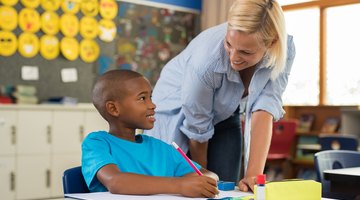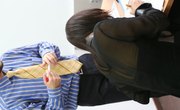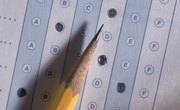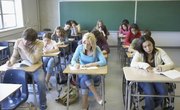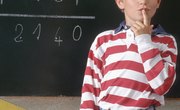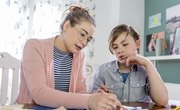Teachers monitor student progress for several purposes, according to the National Center on Student Progress Monitoring. Teachers can use monitoring tools to evaluate how well an individual student learns new concepts presented in class and how well she retains skills and concepts previously learned. Teachers can also evaluate how well the current teaching program performs in reaching students and what changes can be made in the way things are taught to improve learning.
Curriculum-Based Monitoring
Curriculum-based monitoring uses standardized tests that include material presented over the course of the entire year as a way to effectively and accurately monitor student progress and teaching methods. All of the concepts for the year appear on each test, although the questions appear in different forms so students don’t learn the test.
The teacher uses the tests on a regular basis to measure student progress. If the grades rise during the course of the year, the teacher knows the teaching methods are effective and the students are learning. If the grades plateau or drop, the teacher knows the teaching methods are not effective and he needs to present materials and concepts in different ways so that students learn and retain the material.
More than 200 peer-reviewed curriculum-based monitoring studies conclusively prove this method is reliable for assessing student progress and identifying students who need additional help, according to the National Center on Student Progress Monitoring. The studies also demonstrate that teachers receive the necessary information to adjust teaching methods and improve student learning.
Frequent Evaluations
Frequent evaluations that chart student progress can positively impact how students view themselves as learners, according to Paul Black and Dylan Wiliam, authors of “Inside the Black Box.” This is especially true with at-risk students. Frequent evaluation though classroom response, written work, testing and student-teacher interaction can pinpoint areas where a student needs additional help or a different type of instruction to achieve successful learning. Successful learning improves the student’s self-esteem and motivation to continue to participate in the educational experience.
Observation and Interaction
Individual interaction between teacher and student provides the teacher with opportunities to evaluate progress and retention. This interaction can also provide the student with an opportunity to evaluate her own progress and communicate any concerns or needs to the teacher, a component that Black and William report is critical to accurate progress evaluation.
A teacher and student joint review of the student’s written work can facilitate an accurate evaluation of progress, or lack thereof, and provide the teacher with valuable suggestions for adapting instruction to meet the student’s needs. The teacher can supply the student with clear targets for progress and enable the student to map a path to success. Positive feedback provides the student with valuable motivation and encouragement that can change the student’s self-perception from a negative outlook to a positive one.
Related Articles
References
Writer Bio
Rev. Kathryn Rateliff Barr has taught birth, parenting, vaccinations and alternative medicine classes since 1994. She is a pastoral family counselor and has parented birth, step, adopted and foster children. She holds bachelor's degrees in English and history from Centenary College of Louisiana. Studies include midwifery, naturopathy and other alternative therapies.

